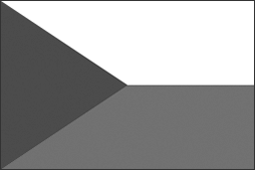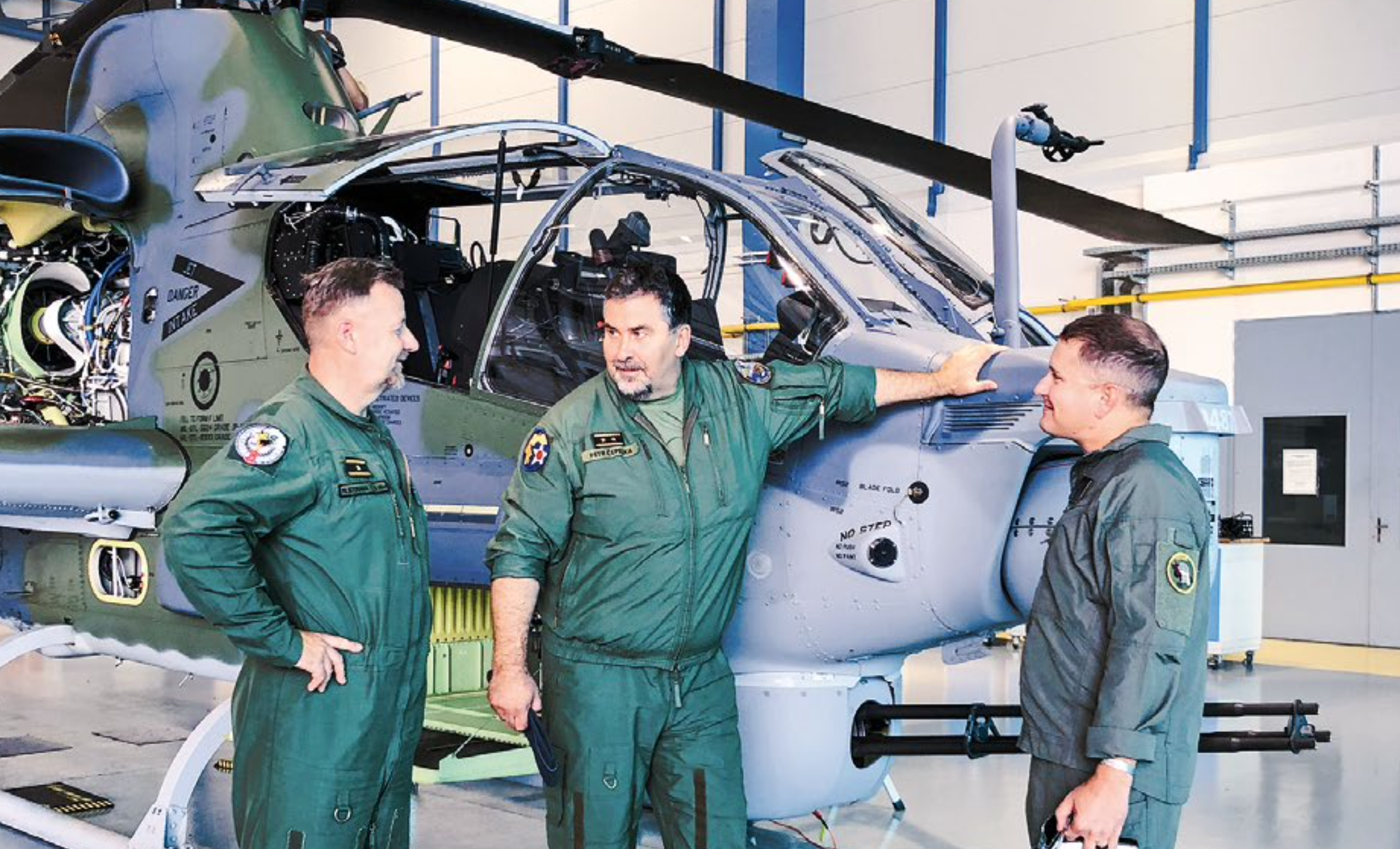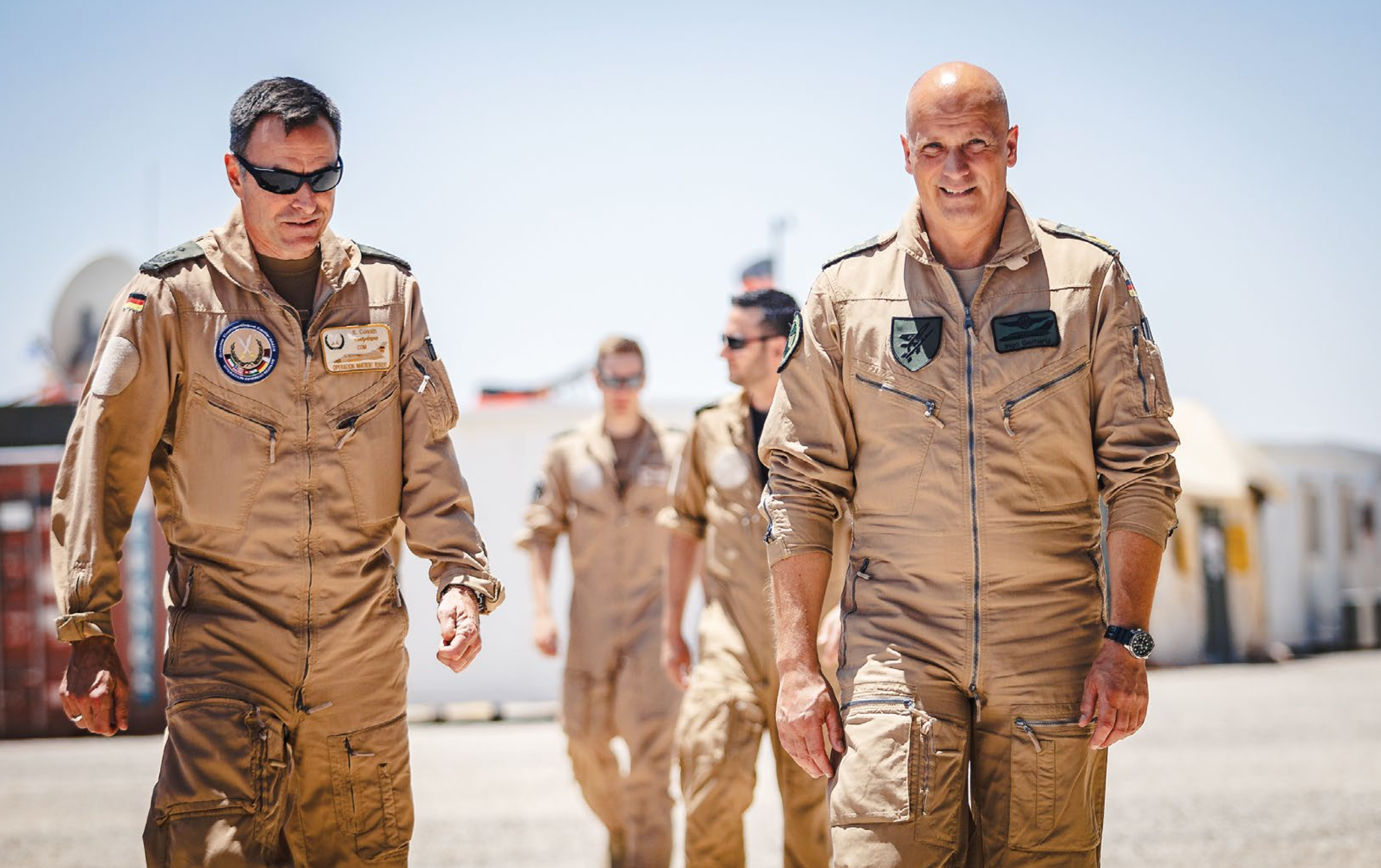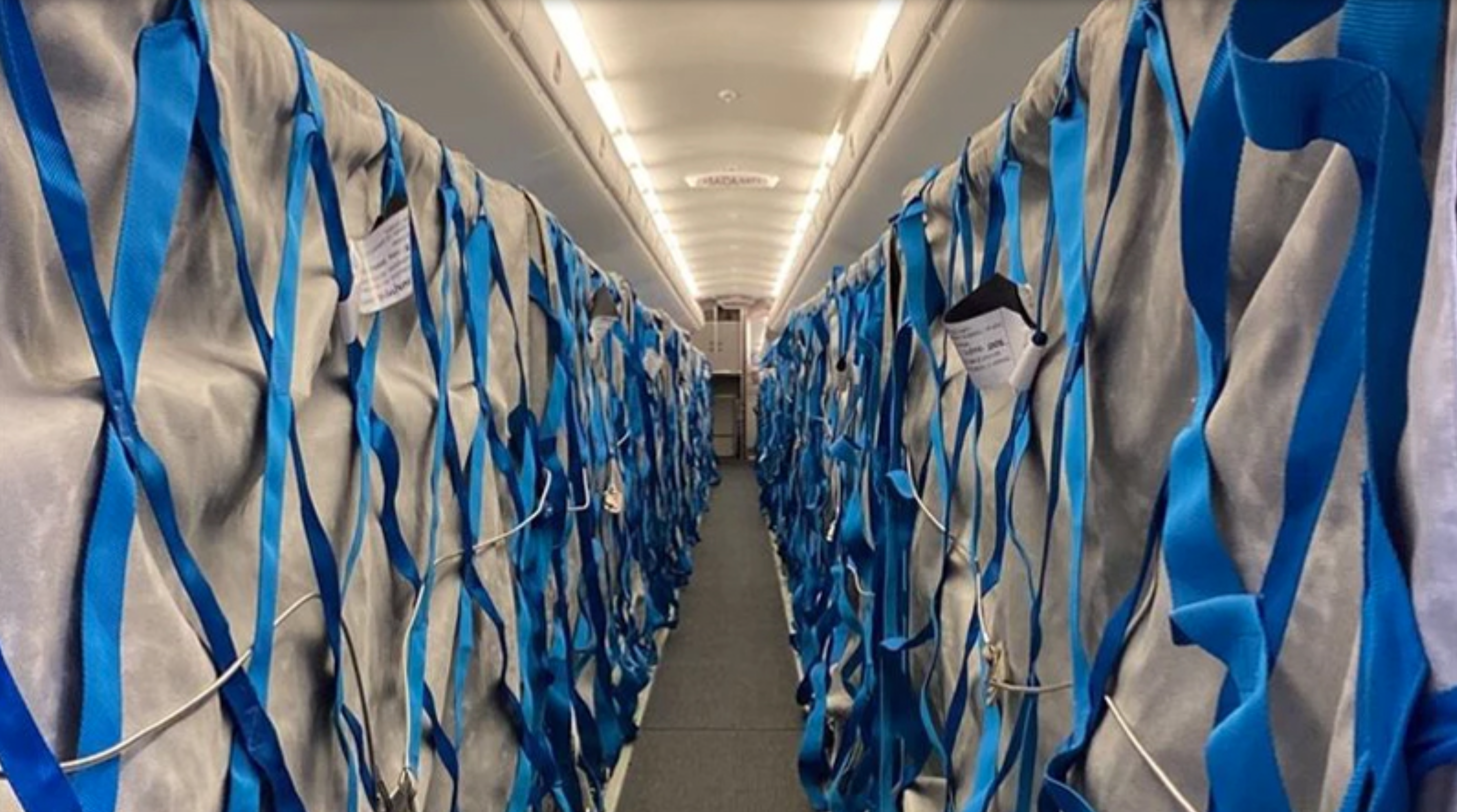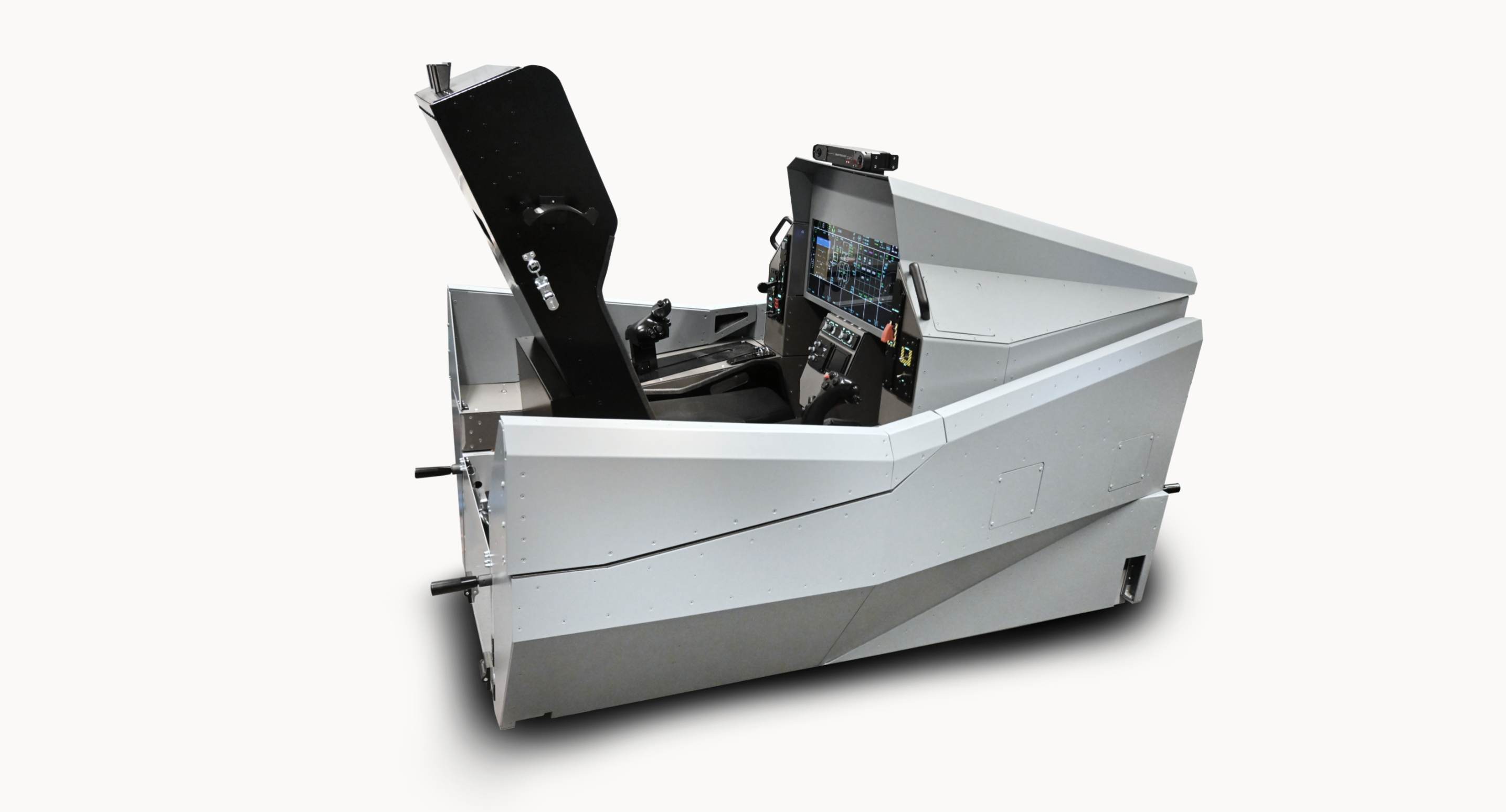The adventurous story of the extraordinary Czech aircraft L- 410, that can both handle extreme weather and land everywhere, continues. L-410 is one of the longest-produced aircraft in its category in history. The variability of use is exceptional and will only grow with new markets. Mrs. Ilona Plšková, company’s CEO, shared the plans of Aircraft Industries.
Interviewed by: Jakub Fojtík, Ph.D., LL.M.
Can you introduce today’s AI? All readers will probably connect the company with the L 410 aircraft, but you are certainly involved in other projects as well…
Today, Aircraft Industries is a modern company based on a long tradition of aircraft production in Kunovice. We are an important representative of the European aviation industry. The primary activity for us remains the production of L 410 series aircraft, but we also collaborate on projects with our manufacturing partners. We provide subcontracting to companies in both the aviation industry and other fields. We cooperate, for example, with companies such as Aero Vodochody, Škoda and RPC Promens. Our long-term partner is also the English company GKN, with which we have been cooperating on the Boeing 787 Dreamliner project for many years; in particular, on the production of the wings’ leading-edge shields.
Prior to 1990, the L 410 aircraft was exported in large quantities, but some of them have surely reached the end of their service life. How many L 410s are in operation in the world today and in how many countries do they actually fly?
More than 1,200 L 410 aircraft have been manufactured in Kunovice since 1969 and more than a quarter of the total amount is currently in operation. L 410 fly over five continents of the world, with operators in more than 60 countries. Our aircraft are especially popular in Russia, Kazakhstan, Colombia and Africa.
One of the big mistakes that the Czech aviation industry has made in the past is that after the collapse of the Eastern European economic system, it underestimated its aircraft servicing needs. How about your company? To what extent is the L 410 supported by your company?
The answer to your question is a little more complicated. After the collapse of the Eastern bloc and the subsequent cancelation of orders from the main customers – the countries of the former Soviet Union – there was a significant decline in sales of the L 410 aircraft. There already was a very large fleet of L 410 aircraft operated in the countries of the former USSR, where they were popular and successful thanks to top flight characteristics, utility value, reliability and economy of operation. There was also very good support for customers in place, service centres with Czech technicians, spare parts warehouses and authorized maintenance organizations. The service centres were supervised by technicians from our company. After the change in market conditions, there was an uncontrolled sale of aircraft from the countries of the former USSR to almost the whole world. These aircraft went into service without any oversight of the parent factory in Kunovice and were sold to private owners. These owners have not historically communicated or cooperated with us. The aircraft was designed in such a way that the operators who bought the aircraft would later operate it for 10-15 years without any requirements for production factory support. Of course, the planes that were in official service were supported by the Kunovice plant. Today, we provide customers with worldwide support in the form of After-Sales Service (AOG, spare parts, technical assistance, modernization, conversions). Approximately 220 – 230 L 410 aircraft are in regular weekly operation, and we communicate with customers, implement intensive operation support and improve after-sales service.
Do you have competition in the market? In the past, along with the supply of various aircraft, repair technology transferred from customers to plants, which after 1990 became paradoxically competitors of the manufacturer, although without access to current documentation and original spare parts. Is AI in the same situation and if so, how does it respond to these “unauthorized fixes”?
Of course, we have competition on the maintenance market. Thanks to the application of EASA rules, however, there has been significant regulation of the service market, as service centres must have the appropriate authorizations. In the regions, where EASA rules are being applied, the demand for good quality of these services has increased. Service can thus only be performed on the basis of approved documentation and using certified parts from the manufacturer. Unauthorized repairs can no longer be performed. This contributes to an increase in the quality of services provided and the safe operation of L 410 aircraft, which we are glad about.
What is the key market for your main product – L 410 aircraft? In the field of similar twin-engine aircraft, there is not much direct competition except for the DHC-6 and Do-228 aircraft, and this segment seems to be relatively small – how do you see it?
This market is not large, it is not overwhelmed and offers enough business opportunities for those who are able to use them. The current L 410 series consists of two modifications: the L 410 UVP-E20, which is popular worldwide for passenger and cargo transport and for para-trooping purposes, and then the modernized modification of the L 410 NG, which differs from its predecessor by significantly improved operating characteristics. The most important of these are longer endurance and range, as well as increased maximum payload. L 410 NG, of course, offers modernized avionics, engines and cabin equipment, making the aircraft more comfortable for both the crew and passengers. The service life is 30,000 flight hours, instead of 20,000 for the UVP-E20. Our company continues to work on its extension to 45,000. It should more than double in the future.
The two modifications of L 410 are aimed at different target market segments, which allows the company to attract more potential customers. The volume of L 410 UVP-E20 and L 410 NG produced will change in the future and will continuously adapt to demand. The L 410 UVP-E20 is still of interest to existing operators intending to renew their fleet, as well as companies operating short-haul flights in regions with poorly developed airport infrastructure.
Due to the higher price and comfort of the NG compared to the E20, the aircraft will focus primarily on specific customers in Southeast Asia, but also in Europe or North America. The use of L 410 NG is expected especially in island states, where refuelling is problematic when it comes to remote islands, and therefore long range is one of the most important parameters. We expect a similar kind of application on longer routes, without the possibility of refuelling at the destination airport, in inland, hard-to-reach areas.
What is the position of the L 410 on the market today? What are the key attributes that determine customers’ preference for your aircraft? What potential do you think the aircraft has in terms of sales numbers?
In our purpose market, the Russian market, the L 410 plays a key role in its category. One of the main features of our aircraft is the ability to operate in extreme climate conditions as well as their variability of equipment, which allows customers the most efficient use regardless of purpose – commuter transport, border monitoring, airdrops, rescue services or pilot training. We can adapt the supplied machines to the individual requirements of the operators, without losing quality. As for the sales potential, we expect it to be large in the coming years, as the market is expected to gradually change operators’ fleets, due to their current age.
Fifty years have passed since the flight of the L 410 and the new generation of the L 410 NG brought more evolutionary changes. What potential do you see for this aircraft in the future? Are you planning further larger upgrades?
Aviation is generally a field that requires constant development in all areas. Aircraft Industries as an aircraft manufacturer follows the path of modernisation of production processes, after-sales service, maintenance and other services provided. In the same way, the company is working ahead of time to improve the L 410 NG so that the aircraft remains attractive to customers not only today, but also in the future.
How is the business plan for L 410 NG developing? The aircraft was flown five years ago and is certified, but not much has been heard about its customers.
Although the aircraft was flown for the first time in 2015, the certifications themselves have taken several years, so the aircraft received the EASA type certificate in 2017, FAA in 2018 and FATA in 2019. This year, the first serial piece was completed, and the other two are currently in production. We are currently finalizing the first contracts for delivery to Russian customers.
One of the topics that appears in the discussions about the L 410 is the area of further modernizations – often mentioned, for example, the area of hull overpressure. The fact that it is not in the aircraft is certainly a consequence of your experts’ considerations. Why wasn’t it integrated in L 410 NG? Wouldn’t that expand the operation possibilities of the airplane?
In the concept of usage of this aircraft, pressurisation of the fuselage does not make much sense. In the commuter category the flight profile is short, and pressurisation would not be effective. In terms of certification, it would also be essentially a different aircraft.
It is impossible not to ask about the production of L 410 in Russia. In what condition is the production line there? Despite the fact that there is often talk of “production”, most of the elements of the structure are probably still being manufactured in Kunovice. What is your company’s share of aircraft to be built in Russia? When is the first Russian aircraft planned to take off?
The final assembly of sets produced in the Czech Republic is in progress at the plant in Yekaterinburg.
Please tell us about the Russian project L 610. There were reports in the media about the start of it, about pre-ordering and about disagreements over a higher price. What is the role of Aircraft Industries in this project?
It is still under resolution, but it is assumed that we, in Kunovice, should manufacture a wing for this aircraft. Therefore, we will be involved as suppliers and design consultants.
Previously, one could see military aircraft from various customers after they were repaired in Kunovice. For the military category, the L 410 seems to be a suitable platform, given the spacious cockpit and the ability to take off from unpaved surface. What is the share of military orders in production and services?
We are not talking about military use, the L 410 aircraft is used as a transport aircraft in the armies of the Czech Republic, Slovakia, Slovenia, Bulgaria and Tunisia. Of course, we also provide them with service and technical support. I cannot tell you a specific share, but we value this cooperation and consider it prestigious.
While military customers are clearly satisfied with the aircraft, most operators use it for transportation purposes only. Has your company considered developing special options for patrolling or other missions?
We develop special aircraft options for the civilian sector (for Air Traffic Control purposes, for airport calibration, for the coast guard, for patrol flights, for oil spills, or for search and rescue operations). For example, this year we completed two patrol aircraft for a European customer. Both machines are equipped with the latest technologies and will be involved in the coast guard as part of European cooperation.
How do you see the future of Aircraft Industries on the horizon of 10 years and beyond? What are the main strategic directions of the company’s development?
For the next 10 years and beyond, Aircraft Industries plans to maintain its position as the largest manufacturer of small transport aircraft in the Czech Republic. The main goal is to expand the geography of the markets and improve the after-sales service to maintain the competitiveness of the L 410. We know that in a few years we will be able to represent the Czech aviation industry even more successfully and thereby contribute to the international standing of the entire state.Unfortunately, the impact of the global COVID-19 pandemic, which has affected virtually all businesses, will have consequences in the future. We had to adapt our strategy to changing circumstances and react in a timely manner, which we managed to do mainly due to the responsibility and experience of our employees. In any case, Aircraft Industries’ development continues to focus on improving business results, the company’s financial strength and providing customers with the highest quality services.
How do you find the support of the Czech government for your company? Is there something you really lack?
Sometimes it is difficult for us to participate in contests for EU / Czech grants. The main obstacle is the lack of subsidy programs that would support large-scale development projects with a large number of participants and a budget of the order of billions of CZK (millions of EUR). Grant applications must be in line with the company’s project deadlines, not the other way around. The terms of financing must also be adapted. The timing and volume often do not coincide, and therefore we cannot always receive these subsidies.
Your company is the founder of the Kunovice Aviation Secondary School. How important is the school to you, and do all graduates start at your company?
Not all graduates of this school come to us – some continue their studies at universities (for example, at the Higher Technical School in Brno, specializing in aircraft construction) and return to us only after graduation, for example, as designers or technologists. Many students from North and South Moravia return to their region after graduating and find work in aviation. Despite this departure of a large number of students, our priority is to maintain this school to manage the constantly changing generations of students. Also, it is in general necessary to continue to be taught to nurture a new generation of aviation professionals.
In the past, you have always supported the Kunovice Aviation Museum, which is unfortunately the exception among Czech companies. What social responsibility projects do you carry out?
We continue to support and collaborate with the Kunovice Aviation Museum on various projects, because it represents a large part of our history. You can find the aircraft that we have produced in the past on display there, and we feel it is our duty to take part in preserving and presenting this part of history to the public. In addition, the concept and philosophy of the museum are close to us, and we can see that the management of the museum takes very good care of it.Photos by: Jakub Fojtík, Aircraft Industries



